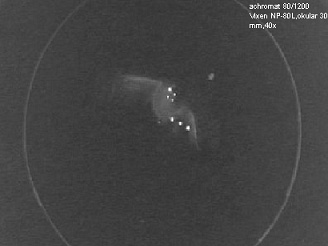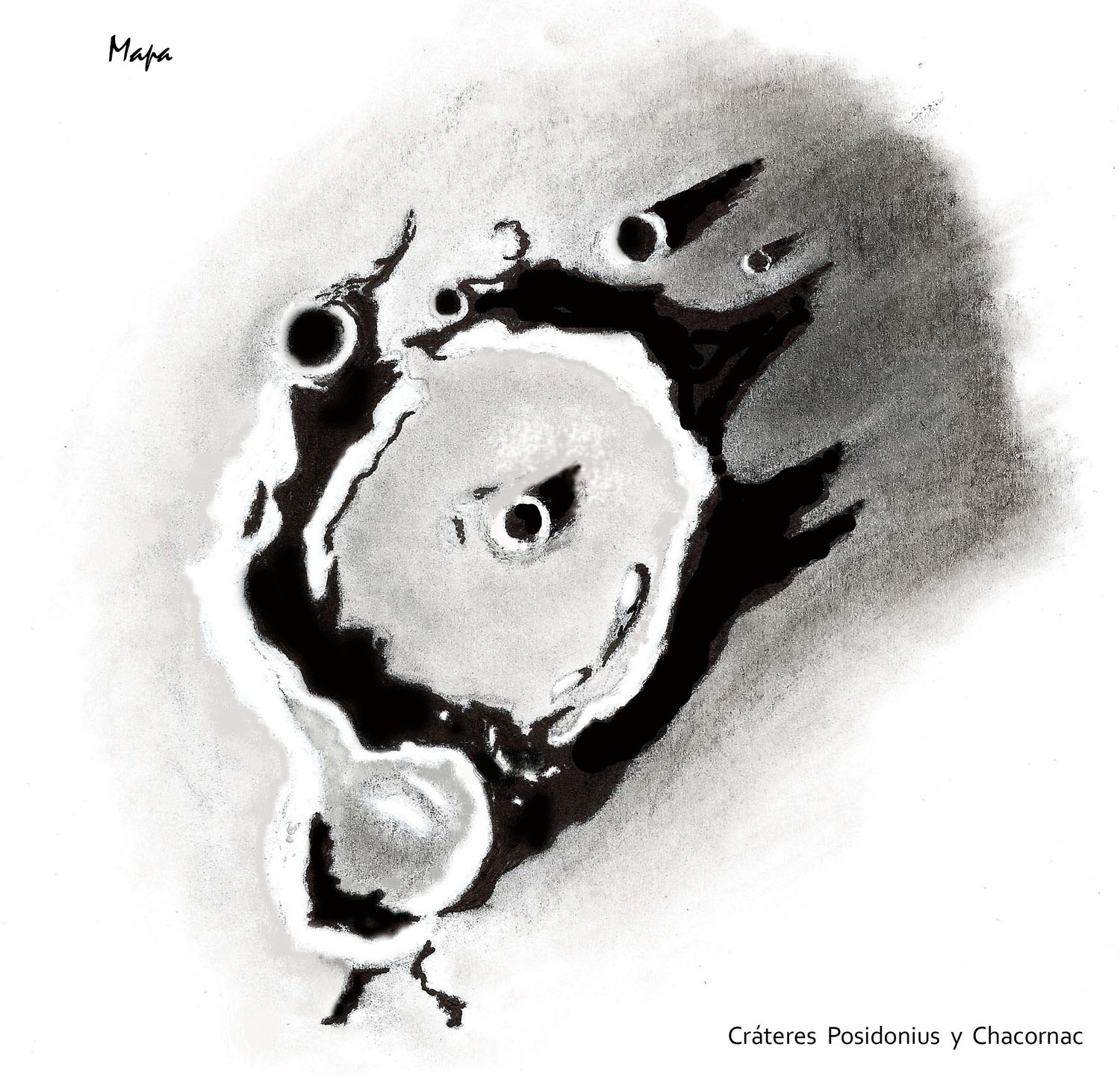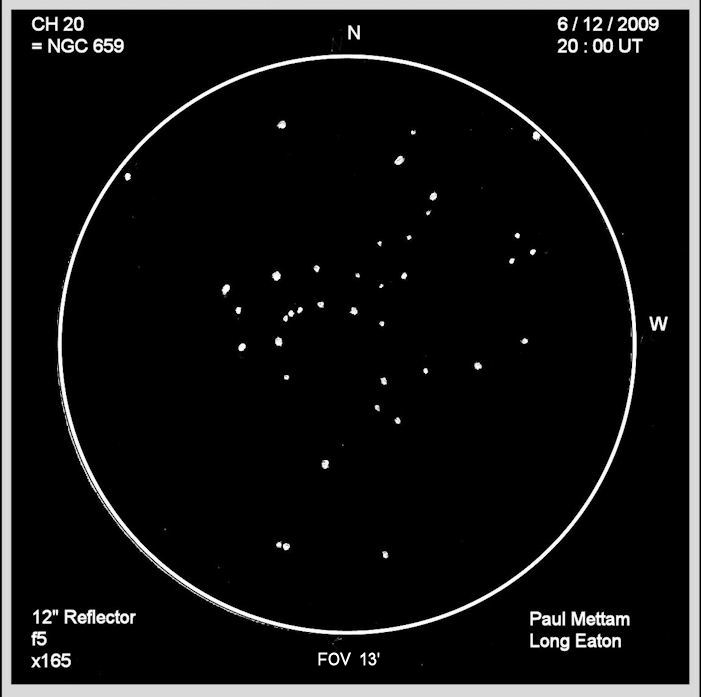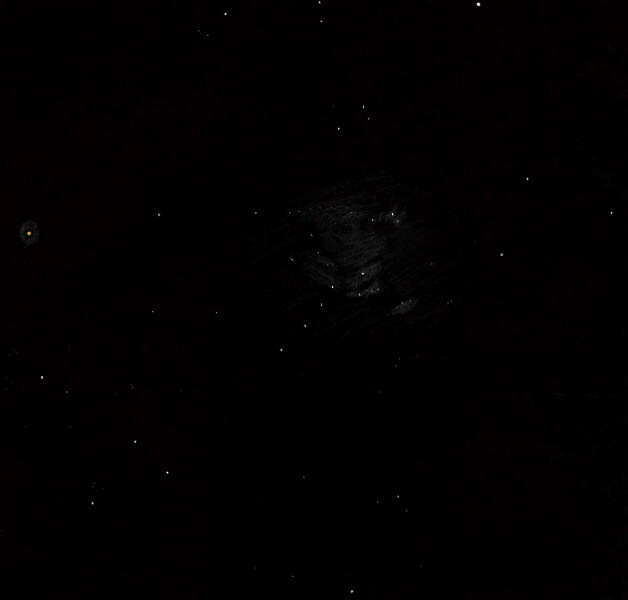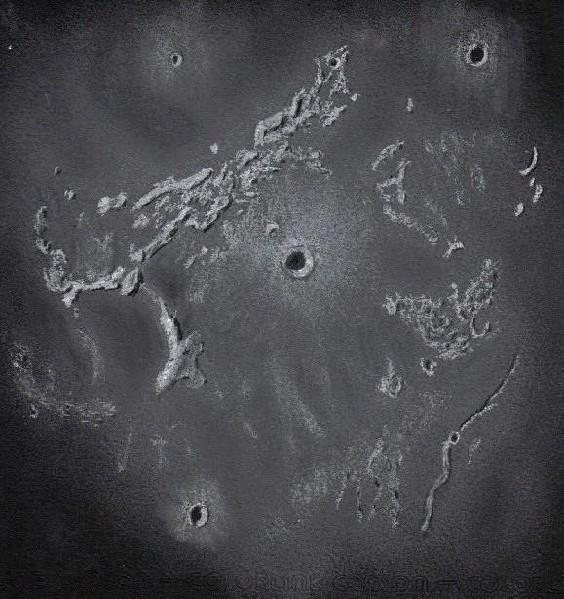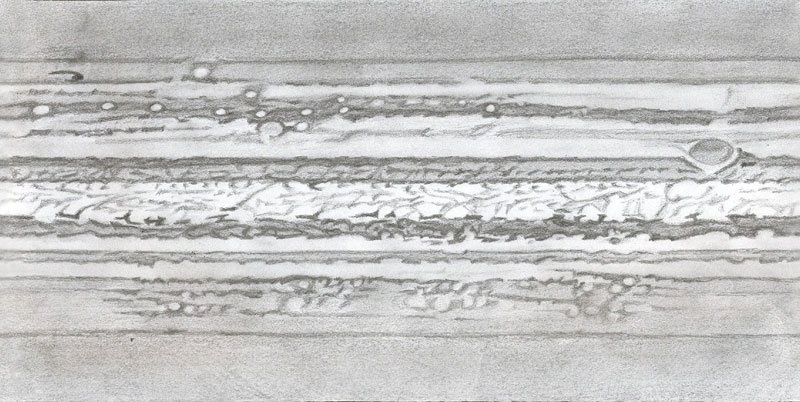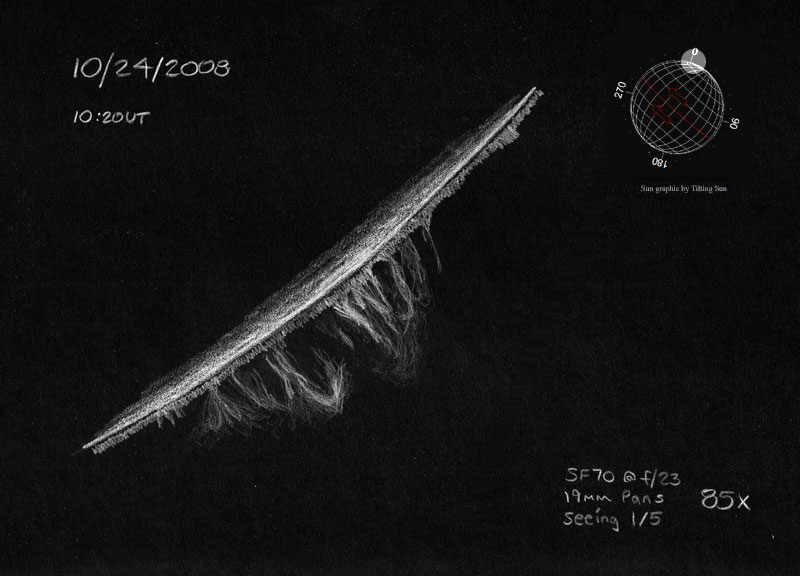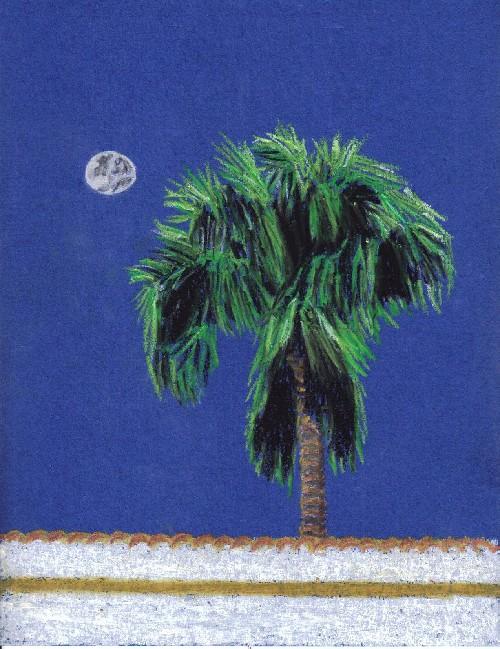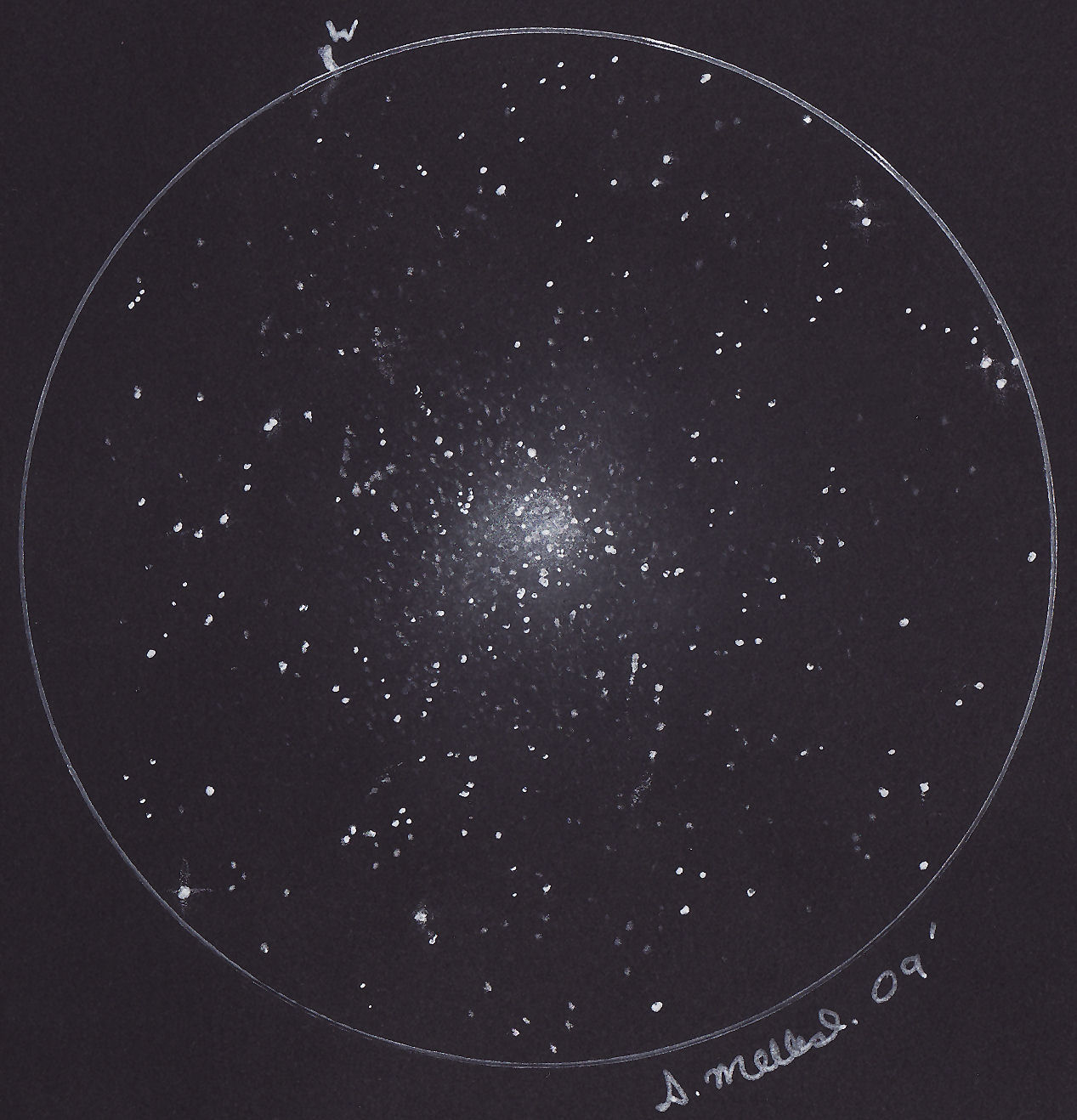
NGC 104 / 47 Tucanae
Sketch and Details by Scott Mellish
NGC 104/ 47 Tucanae
Globular Cluster
Ilford NSW Australia
17/10/09
56cm f5 Dobsonian Telescope
Field: 17′
Magnification: 354x
Sky Quality Meter reading: 21:78
White pen
Soft white pencil
Hard white pencil
White pastel chalk
I have made numerous attempts at sketching this remarkable globular cluster over the years, mostly in small telescopes at low power where it is just a bright ball. At higher magnification in my 56cm dob it is a vastly different object.
I had a dose of the Flu while I was away observing, but the sky was clear so I spent a solid two hours at the eyepiece sketching this globular, and it nearly done my head in. Every time I looked in the 8mm Ethos there seemed to be more and more stars to add, plus the 100deg FOV of this eyepiece was almost to much to handle.
The following night was clear again so I spent another 40mins just dabbling with the sketch to try and get as accurate eyepiece view as possible.
I have never been 100% satisfied with the sketches I have done previously of NGC 104 and most made the bin. This one however came out fairly good, it is certainly the best I could do with 47 Tuc.
I do not like to overdo eyepiece sketches, especially with size and brightness as one can be tempted to get a bit carried away, and detract from the visual perspective.
There has been no processing done with the sketch.
I do not think I will be doing NGC 104 again any time soon.
Too many stars!
Scott Mellish.


